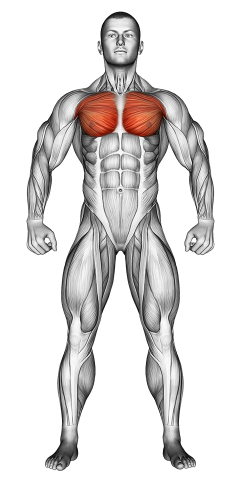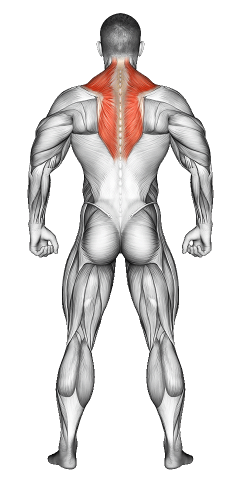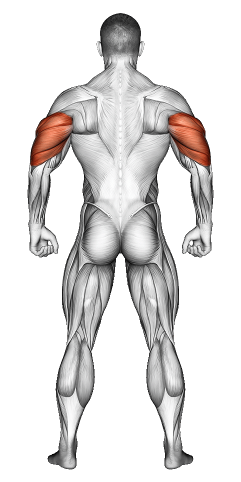Weighted Push Up: Video Tutorial & Exercise Guide

Written By: Claude Michael
Updated: Oct 13, 2024
| Workout | Weighted Push Up |
| Primary Muscle Group | Chest |
| Secondary Muscle Group | Shoulders, Triceps |
| Equipment Required | Weight |
| Force Type | Push |
| Mechanics | Compound |
| Exercise Type | Strength |
| Difficulty | Intermediate |
Weighted Push Up: Video Tutorial & Exercise Guide
- 1.Weighted Push Up: Muscle Groups
- -1.1Primary Muscle Group
- -1.2Secondary Muscle Group
- 2.Weighted Push Up: Step-by-Step Guide
- 3.Weighted Push Up: Overview
- 4.Weighted Push Up: Benefits
- 5.Weighted Push Up: Pro Tips & Advanced Techniques
- 6.Weighted Push Up: Progression Plan
- 7.Weighted Push Up: Frequently Asked Questions (FAQs)
Weighted Push-Up: Step-by-Step Guide
- Step 1: Begin by placing a weighted plate or weighted vest securely on your back. Make sure the weight is positioned evenly across your upper back to avoid strain or imbalance.
- Step 2: Get into a high plank position with your hands placed slightly wider than shoulder-width apart. Keep your body in a straight line from head to heels, engaging your core to maintain proper alignment.
- Step 3: Lower your body by bending your elbows, keeping them at about a 45-degree angle from your torso. Lower your chest toward the ground until your arms form a 90-degree angle or your chest nearly touches the ground.
- Step 4: Push through your palms to extend your arms and return to the starting position. Focus on pressing evenly and maintaining a straight body line as you push upward.
- Step 5: Repeat for the desired number of reps, ensuring you maintain control and form throughout the entire movement.
Weighted Push-Up: Overview
The Weighted Push-Up is a more advanced variation of the traditional push-up, designed to increase strength and muscle growth in the chest, shoulders, triceps, and core. By adding resistance (such as a weighted plate or vest), this exercise challenges the muscles more, promoting greater hypertrophy and strength gains.
This exercise is ideal for those looking to take their push-ups to the next level by increasing intensity and resistance. It can be performed using various types of weights, making it versatile and adaptable to different fitness levels.
Weighted Push-Up: Benefits
The Weighted Push-Up increases resistance during the movement, helping build more strength and muscle in the chest, triceps, and shoulders. It also engages the core more intensely to stabilize the additional weight, enhancing core strength and stability.
This exercise is excellent for those looking to push past plateaus and improve their upper-body strength, while still utilizing bodyweight training principles. It’s a functional exercise that can be easily modified by adding or adjusting the weight.
Weighted Push-Up: Pro Tips & Advanced Techniques
Make sure the weight is distributed evenly across your upper back to avoid placing too much pressure on your lower back. Focus on slow, controlled movements, especially during the lowering phase, to maximize time under tension. If you’re performing the exercise with a partner, have them place and remove the weight for safety. If you’re using a weighted vest, ensure it fits snugly to avoid shifting during the movement.
Weighted Push-Up: Progression Plan
Beginner
Intermediate
Advanced
Weighted Push-Ups: Frequently Asked Questions (FAQs)
What muscles do Weighted Push-Ups target?
+Weighted Push-Ups primarily target the chest, shoulders, triceps, and core. The added weight increases muscle activation and promotes greater strength and hypertrophy.
How can I make Weighted Push-Ups easier?
+To make the exercise easier, start with a lighter weight or reduce the number of reps. Focus on mastering the form with a lighter load before progressing to heavier weights.
How do I increase the difficulty of Weighted Push-Ups?
+Increase the difficulty by adding more weight, slowing down the tempo, or adding a pause at the bottom of the movement. You can also elevate your feet to shift more of the weight onto your upper body.
How often should I do Weighted Push-Ups?
+Incorporate Weighted Push-Ups 1-2 times per week as part of your upper-body workout routine. They pair well with other pressing exercises for a balanced chest workout.
What common mistakes should I avoid?
+Avoid placing the weight too low on your back, which can strain your lower back. Focus on maintaining a tight core and a straight body line to prevent sagging or arching during the movement.
Share
Don’t Wish for It, Work for It – Join the FlexXP Newsletter Today!
Thank you for signing up for the FlexXP Newsletter!
This site is protected and the Google Privacy Policy and Terms of Service apply.


